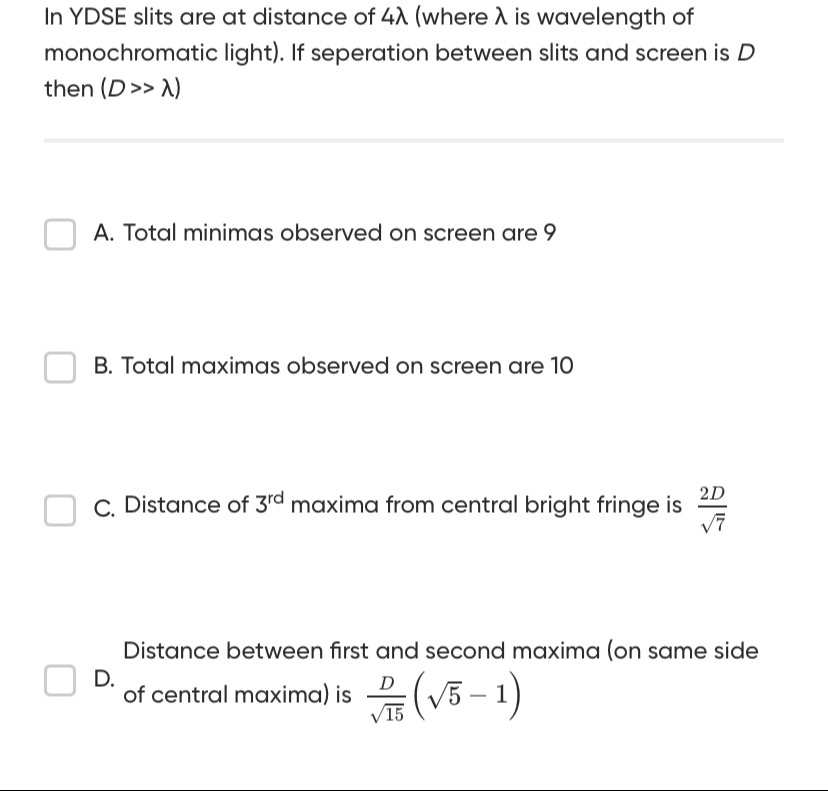Question
Question: In YDSE slits are at distance of $4\lambda$ (where $\lambda$ is wavelength of monochromatic light). ...
In YDSE slits are at distance of 4λ (where λ is wavelength of monochromatic light). If seperation between slits and screen is D then (D>>λ)

Total minimas observed on screen are 9
Total maximas observed on screen are 10
Distance of 3rd maxima from central bright fringe is 72D
Distance between first and second maxima (on same side of central maxima) is 15D(5−1)
D
Solution
The condition for maxima in YDSE is dsinθ=nλ. Given d=4λ, we have sinθ=4λnλ=4n. For observation on the screen, ∣sinθ∣≤1, so ∣n∣≤4. Thus, n can take values 0,±1,±2,±3,±4, giving a total of 1+2×4=9 maxima.
The condition for minima is dsinθ=(2m+1)2λ. So, sinθ=2(4λ)(2m+1)λ=82m+1. For observation on the screen, ∣sinθ∣≤1, so ∣2m+1∣≤8, which means −8≤2m+1≤8. This gives −9≤2m≤7, or −4.5≤m≤3.5. Thus, m can take values −4,−3,−2,−1,0,1,2,3, giving a total of 8 minima.
The position of the n-th maxima is yn=Dtanθn. Using sinθn=dnλ and tanθn=1−sin2θnsinθn, we get yn=D1−(nλ/d)2nλ/d.
For the 3rd maxima (n=3), y3=D1−(3λ/4λ)23λ/(4λ)=D1−9/163/4=D7/163/4=D7/43/4=73D. Option C is incorrect.
For the 1st maxima (n=1), y1=D1−(1λ/4λ)21λ/(4λ)=D1−1/161/4=D15/161/4=D15/41/4=15D. For the 2nd maxima (n=2), y2=D1−(2λ/4λ)22λ/(4λ)=D1−1/41/2=D3/41/2=D3/21/2=3D. The distance between the first and second maxima is y2−y1=3D−15D=D(155−1)=15D(5−1). Option D is correct.
